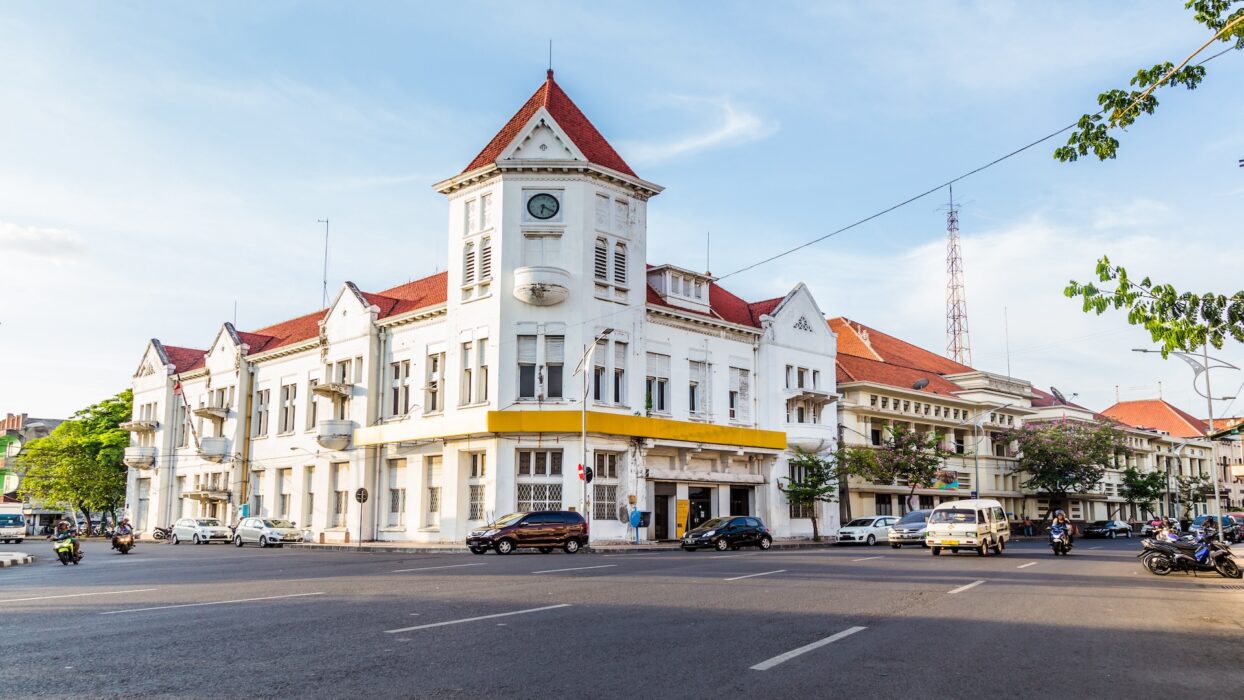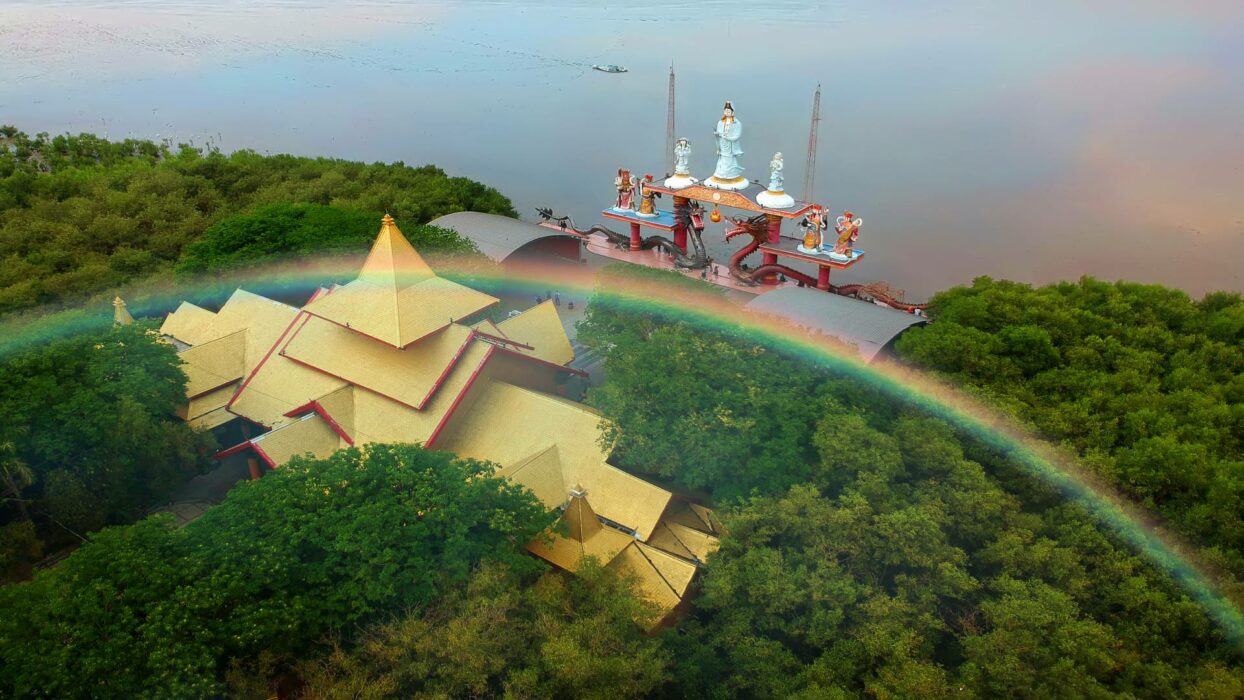
Often overshadowed by the tourist-laden shores of Bali or the ancient temples of Yogyakarta, Surabaya stands as a testament to Indonesia’s fierce spirit and modern ambition. As the nation’s second-largest city and the capital of East Java, it’s frequently dismissed as a mere industrial hub or a transit point. But to do so is to miss the vibrant pulse of a city steeped in revolutionary history, brimming with culinary delights, and showcasing a unique blend of colonial charm and contemporary energy.
Surabaya is not a city that reveals its secrets at a casual glance. It asks you to look deeper, to walk its historic lanes, to taste its bold flavors, and to listen to the echoes of its past. This is the Kota Pahlawan, the "City of Heroes," a title earned through the blood and bravery of its people. This guide will take you beyond the factory gates and into the heart of one of Southeast Asia’s most underrated metropolises.
A Glimpse into History: The Soul of the City of Heroes

Related Articles about A Traveler’s Guide to Surabaya: Discovering the Soul of Indonesia’s City of Heroes:
- Mexico: A Tapestry of Ancient Wonders, Vibrant Culture, and Sun-Kissed Shores
- Samoa: A Jewel of the South Pacific – Your Ultimate Travel Guide
- Kazakhstan: A Traveler’s Guide to the Land of Steppe and Sky
- A Traveler’s Handbook to Singapore: A Jewel of Southeast Asia
- Greece: A Timeless Odyssey – Your Comprehensive Travel Guide
Understanding Surabaya means understanding its history. The city’s very name is born from a local myth—a fierce battle between a sura (shark) and a baya (crocodile), creatures that now adorn the city’s emblem, symbolizing the courage and determination to defend one’s territory.
While its origins as a major port date back to the Majapahit Empire, Surabaya’s modern identity was forged in the fires of revolution. After Indonesia declared its independence on August 17, 1945, Allied forces arrived to disarm the Japanese and return the archipelago to Dutch colonial rule. The people of Surabaya resisted with unparalleled ferocity.
The climax was the Battle of Surabaya, which began on November 10, 1945. Despite being outgunned, thousands of Indonesian soldiers and civilian militias fought a bloody, three-week battle against British and British Indian troops. While the city eventually fell, the battle galvanized national resistance and proved to the world that Indonesia’s independence was not negotiable. The date is now commemorated as Heroes’ Day across Indonesia. This resilient, defiant spirit is the bedrock of Surabaya’s character today—a city that is proud, hardworking, and deeply patriotic.
Top Attractions: Where History, Culture, and Modernity Collide
Surabaya’s attractions are a compelling chronicle of its journey, from a colonial trading post to a revolutionary battleground and a modern economic powerhouse.
1. Heroes Monument (Tugu Pahlawan) and 10th November Museum
No visit to Surabaya is complete without paying homage at its most sacred site. The Tugu Pahlawan is a soaring, 41-meter-tall white obelisk that pierces the sky, a stark and powerful symbol of the struggle for independence. Beneath this monument lies the 10th November Museum, an excellent subterranean museum that meticulously documents the Battle of Surabaya. Through dioramas, historical artifacts, photographs, and the stirring recorded speeches of the revolutionary leader Bung Tomo, you can feel the raw emotion and immense sacrifice that define this city.
2. The House of Sampoerna
A truly unique attraction, the House of Sampoerna is a beautifully preserved Dutch colonial-style compound that now serves as a museum, art gallery, and active cigarette factory. Owned by one of Indonesia’s most famous clove cigarette (kretek) producers, the museum details the history of the Sampoerna family and the kretek industry. The highlight is the viewing deck overlooking the factory floor, where hundreds of women hand-roll cigarettes at an astonishing speed. The complex also includes a chic café and offers a free, guided Surabaya Heritage Track bus tour, which is an excellent way to see several historical landmarks.

3. The Arab Quarter (Kampung Arab) and Ampel Mosque
Step into a different world in the labyrinthine alleys of the Arab Quarter. This bustling neighborhood is the heart of Surabaya’s Arab-Indonesian community. The air is thick with the scent of perfume oils, incense, and grilled meats. The central point is the Sunan Ampel Mosque, one of Java’s oldest mosques and the final resting place of a revered Islamic saint, Sunan Ampel. The area around the mosque is a vibrant market (souk) where you can buy everything from prayer beads and dates to traditional clothing and aromatic spices.
4. Hotel Majapahit Surabaya
More than just a luxury hotel, this is a living piece of history. Originally the Oranje Hotel, it was the site of the pivotal "flag incident" in 1945. Indonesian youths tore the blue strip from the Dutch tricolor flag flying atop the hotel, leaving the red and white of the Indonesian flag. This act of defiance was a major catalyst for the Battle of Surabaya. Even if you aren’t staying here, it’s worth visiting to admire its stunning colonial architecture and have a drink in its historic bar.
5. Cheng Hoo Mosque
Reflecting Surabaya’s multicultural fabric, the Muhammad Cheng Hoo Mosque is a striking piece of architecture. It’s built in a style that fuses Chinese temple design with Middle Eastern and Javanese elements, featuring red pagodas, intricate dragon motifs, and Arabic calligraphy. It honors Admiral Zheng He (Cheng Hoo), the famous Muslim-Chinese explorer who visited the region centuries ago.
6. Suramadu National Bridge
A symbol of modern Surabaya, the Suramadu Bridge is an engineering marvel that connects Surabaya with the island of Madura. Spanning over 5.4 kilometers, it’s the longest bridge in Indonesia. While it serves a practical purpose, a drive across it—especially at night when it’s brilliantly illuminated—offers spectacular views of the city skyline and the Madura Strait.
Navigating Surabaya: Transportation
Getting to and around Surabaya is relatively straightforward.
- By Air: Juanda International Airport (SUB) is a major hub with excellent domestic and international connections. From the airport, official taxis, DAMRI airport buses, or ride-hailing services like Grab and Gojek are the best options to get into the city.
- By Train: Surabaya has two main train stations: Gubeng for southbound and eastbound trains (to Malang, Banyuwangi, and Yogyakarta) and Pasar Turi for northbound trains (to Jakarta). The train network is an efficient and scenic way to travel across Java.
- Getting Around the City:
- Ride-Hailing: Grab and Gojek are the most convenient and affordable ways to travel. You can book a car (Gocar) or a motorcycle taxi (Goride), which is perfect for weaving through traffic.
- Taxis: Reputable companies like Blue Bird are metered and reliable.
- Suroboyo Bus: For a unique local experience, try the city’s modern, air-conditioned public bus. In a progressive environmental initiative, you can pay for your fare using plastic bottles, which can be deposited at designated terminals.
Where to Stay: Accommodation for Every Budget
Surabaya offers a wide range of accommodation to suit any traveler.
- Luxury: For a taste of history and five-star service, the Hotel Majapahit Surabaya MGallery is unparalleled. Other top choices include the JW Marriott Hotel Surabaya and the Sheraton Surabaya Hotel & Towers, both located in the central business district with access to premium shopping malls.
- Mid-Range: This is where Surabaya truly shines. Stylish and modern boutique hotels like Artotel Surabaya and Yello Hotel Jemursari offer great value, artistic flair, and excellent amenities. The Harris Hotel & Conventions Gubeng is another popular choice, conveniently located near the train station.
- Budget: Backpackers and budget travelers will find numerous guesthouses (losmen) and hostels. Areas around Gubeng Station offer plenty of affordable options. Look for places with good reviews online, as quality can vary.
A Culinary Journey: The Bold Flavors of East Java
Surabaya is a food lover’s paradise. The cuisine is known for its bold, savory, and often spicy flavors. Don’t leave without trying:
- Rawon: A rich, black beef soup. Its unique color and nutty flavor come from the keluak nut. It’s often served with rice, salted egg, and bean sprouts.
- Lontong Balap: A vegetarian dish unique to Surabaya, consisting of compressed rice cakes (lontong), fried tofu, lentho (a fried cassava cake), and a mountain of bean sprouts, all doused in a savory, garlic-infused broth with a dash of shrimp paste (petis).
- Rujak Cingur: This is Surabaya’s most famous and adventurous dish. It’s a salad of sorts, featuring various fruits and vegetables, tempeh, tofu, and the star ingredient: cingur (cooked cow muzzle), all mixed in a thick, pungent sauce of sweet soy, peanuts, chili, and petis.
- Sate Klopo: A delicious twist on satay, where the marinated meat (usually chicken or beef) is coated in grated coconut before being grilled, giving it a wonderfully fragrant and slightly crispy texture.
Practical Travel Tips
- Best Time to Visit: The dry season, from May to October, is the ideal time to visit. You’ll experience less rainfall and more sunshine, making it perfect for exploring. The wet season (November to April) sees heavy downpours, but the city remains active. Visiting around Heroes’ Day on November 10th offers a unique cultural experience with city-wide commemorations.
- Language: The primary language is Indonesian (Bahasa Indonesia), with a strong local Javanese dialect. English is spoken in major hotels, restaurants, and tourist sites, but learning a few basic Indonesian phrases like terima kasih (thank you) and selamat pagi (good morning) will be greatly appreciated.
- Currency: The currency is the Indonesian Rupiah (IDR). ATMs are widely available, and credit cards are accepted in most mid-to-high-end establishments. It’s always wise to carry some cash for smaller shops and street food vendors.
- Etiquette: Indonesians are generally polite and welcoming. Dress modestly, especially when visiting mosques or religious sites (cover shoulders and knees). Use your right hand for giving and receiving items and for eating.
- Safety: Surabaya is a relatively safe city. The biggest hazard is the traffic, so be extremely cautious when crossing streets. Use common sense with your belongings, especially in crowded markets.
Conclusion: More Than a Stopover
Surabaya is a city with a powerful story to tell. It is a place that honors its heroic past while forging a dynamic future. It may not have the white-sand beaches or ancient wonders of its neighbors, but it offers something arguably more authentic: a window into the resilient, industrious, and proud heart of modern Indonesia. Come to walk in the footsteps of heroes, to feast on flavors you won’t find anywhere else, and to discover a city that is, in every sense of the word, a survivor. Surabaya is not just a stopover; it is a destination in its own right, waiting to share its incredible spirit with those willing to explore.





